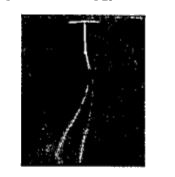Condoms
Increase sperm phagocytosis
Decrease sperm motility
Prevent the ejaculated semen from entering the female reproductive tract
Inhibit ovulation
The correct Answer is:C
Step-by-Step Text Solution:
1. Definition of Condoms: Condoms are barrier methods of contraception that prevent pregnancy and sexually transmitted infections (STIs). They are available for both males and females.
2. Types of Condoms: There are two main types of condoms:
- Male Condoms: These are worn on the penis during sexual intercourse.
- Female Condoms: These are inserted into the vagina before intercourse.
3. Material and Usage: Condoms are typically made from elastic materials such as latex or polyurethane. Importantly, they are designed for single use only and should not be reused.
4. Mechanism of Action: Condoms act as a physical barrier that prevents sperm from entering the female reproductive tract. This barrier stops the fusion of male and female gametes, thereby preventing fertilization.
5. Correct Option: Among the options provided, the correct statement regarding the function of condoms is that they prevent the ejaculated semen from entering the female reproductive tract. This is achieved by creating a physical barrier.
6. Incorrect Options: The other options mentioned, such as increased sperm phagocytosis and decreased sperm mortality, are not applicable to the function of condoms. These concepts are related to other contraceptive methods, such as intrauterine devices (IUDs).
- Male Condoms: These are worn on the penis during sexual intercourse.
- Female Condoms: These are inserted into the vagina before intercourse.
Similar Questions
Identify the contraceptive:

a) Copper T
b) Condom
c) Hormonal insertion device
d) Sterilised needle tagView SolutionGiven below are four methods (A-D) and their modes of action (i-iv) in achieving contraception. Select their correct matching from the four options that follow
MethodMode of ActionA.Oral pill(i)Prevents sperms reaching cervixB.Condom(ii)Suppresses sperm motilityC.Vasectomy(iii)Prevents ovulationD.Copper T(iv)Semen contain no spermsView Solution
Knowledge Check
- Question 1 - Select One
l Male condoms are disposable, female condoms are not.
II. Male and female condoms, both, are disposable.
III. Condoms are not disposable in general
IV. Condoms cannot be self-inserted
What is true from the above statements?AI, IVBIII, IVCOnly llDAll - Question 2 - Select One
Read the following statements and find out the incorrec statements.
a. Barrier methods are available for both males and females.
b. In barrier methods, ovum and sperms are prevented from physically meeting with the help of barriers.
c. Condoms are made of thin rubber/latex sheath that are used to cuver the penis in male or vagina and cervix in the female, just before coitus so that the ejaculated semen would not enter into the female reproductive tract.
d. Both the male and the female condoms are reusable, can be self-inserted and thereby gives privacy to the user.
e. Disphragms, cervical caps and vaults are barriers made of rubber that are inserted into the female reproductive tract to cover cervix during coitus. These barriers are disposable.Aa and bBb and cCc and dDd and e - Question 3 - Select One
Read the following statements and select the option having both incorrect statements
(i) Condoms decrease sperm motility
(ii) Diaphragms, cervical caps and vaults are for both males and females
(iii) IUDs are inserted by expert nurses
(iv) Sterilisation is a terminal method to prevent further pregnancy.A(i) and (iii)B(i) and (ii)C(iii) nad (iv)D(ii) and (iv)
Condom "Nirodh" is manufacture by:
View SolutionMatch and find the correct option
III(a)Contraceptive (i)prevents sperms reaching female reproductive tract(b)Condom(ii)inhibits ovulation and implantation (c)Vasectomy (iii) Increasephasgocyosis of sperms(d)Copper-T(iv)Blocks gamete transportView SolutionGiven below are foru methods (A-D) and their modes of action(a-d) in achiving contraception. Select their correct matching for the four options that follow
MethodMode of ActionAThe pill(a)Prevents spermsBCondom(b)Prevents implantationCVasectomy(c)Prevents ovulationDCopper T(d)Saman contains no spermaView SolutionGiven below ar four methods (a-d) and their modes of action (i-iv) in achieving contraception. Select their correct mathing from the four options that follow.
MethodMode of Action(a) The pill (i) Prevents sperms reaching cervix(b) Condom(ii) Prevents implantation(c) Vasectomy(iii) Prevents ovulation(d) Copper-T(iv) Semen contains no spermView SolutionThe advantages of using condom are
View Solution

